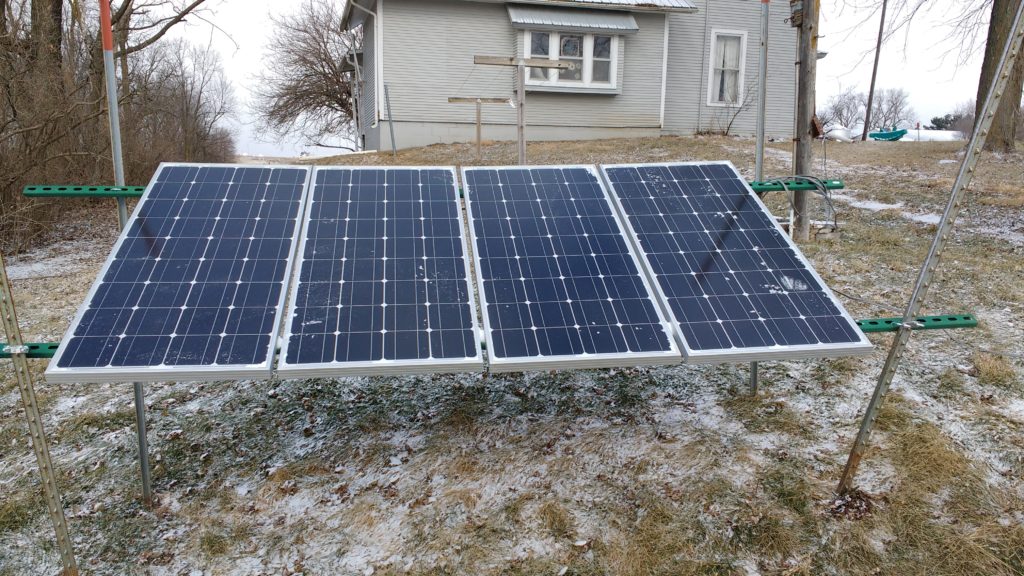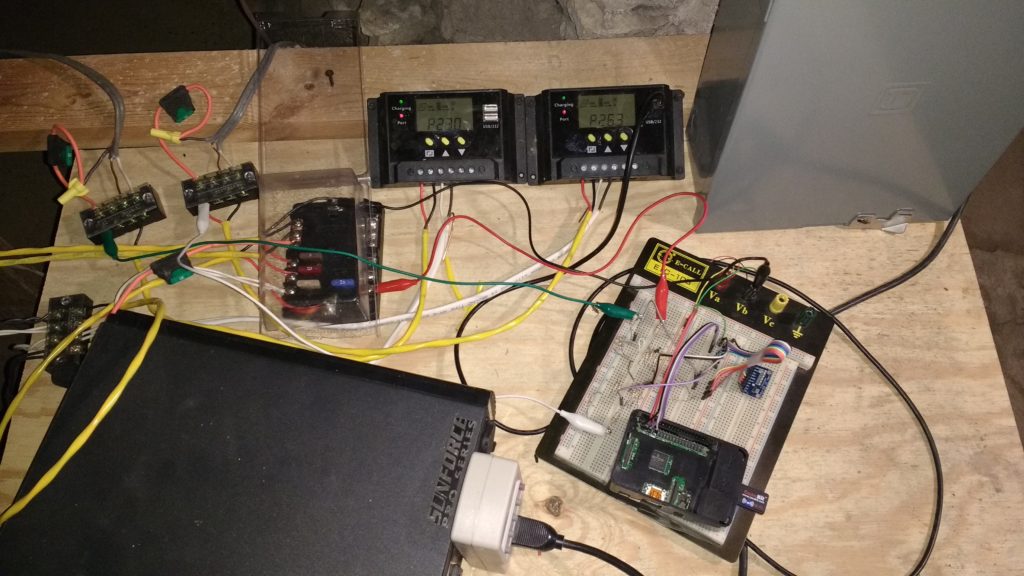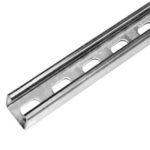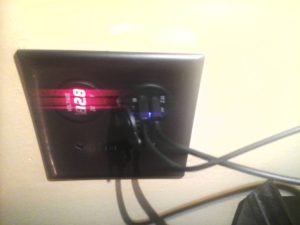
This year I had a bunch of money left over after I sold my motorcycle to my sister. The motorcycle, a 1978 Suzuki GS550, had been sitting in the garage for a season, and I had to admit that I wasn’t riding it anymore. So I sold it to my sister and have missed it ever since. 🙁
To ameliorate my loss I decided to buy some solar panels! The short version, then the details:
- Four 100W Renogy monocrystalline panels at 12V each
- Mounted on some unistrut from Menards and some tee posts
- Wired as two strands of two panels in parallel (about 20A @ 12V per wire)
- About 100 feet of two strands of 2x14AWG UF (I know it’s undersized!)
- Two VicTec 20A PWM charge controllers (one for each strand of two panels)
- Two Costco 6V deep cycle golf cart batteries, wired in series to be one 12V battery

The Solar Panels
I waited and waited for a good deal on solar panels, and I finally got one on Amazon Warehouse. $467 for an open box version of the Renogy 100W moncrystalline panel 4-pack:
Renogy 4 Piece 100W Monocrystalline Photovoltaic PV Solar Panel Module 12V Battery Charging
Of course I ordered with my Prime account and got free shipping, I was surprised by the size of the package and happy that I had Prime. These are surprisingly light and thin, but strong. They have aluminum frames with lots of good hole locations for mounting. The solder tabs are ended in a small plastic black box on the back side where two standard MC4 connectors are neatly emergent. Of course I snipped those off and wire-nutted Romex on. Looking back, I should have stayed with MC4, but this is my trial run, and a lot is rough. I tucked the wire nuts up under the panel in the frame and they’ve stayed dry. I also probably would have bought the 250W panels, more bang for the buck.
I love Unistrut! It’s the adult version of an erector set! You can get a 10′ galvanized piece from Menards (or your local big box home improvement store) for $16. Then there are lots of little attachments to make angles, etc. I bolted everything with 8mm bolts and nuts.

10′ 14-Gauge Pre-Galvanized Strut Channel
Then I mounted everything on four tee posts and gave it a rough angle towards the sun. More optimization to do there later! Actually, a word on optimization: If I have a 400W setup, and I could gain 10% through some optimization, it would get me 40W more. I’d rather spend my money and time buying another 100W panel than chasing after 40W. Maybe if I had 1.5kW it would be worth the time.
My charge controllers are pretty cheap, but they work. PWM, 20A apiece, so I have them set up in two strings (200W each). They have LCD displays so I can see the panel voltage, battery voltage, and charge current. But to do that I have to go into the cellar, so I got the next device below.
This next puppy has been the primary interface to my solar system. (That’s a funny sentence!) It has a voltage display and two USB plugs and one cigarette adapter. The individual pieces can be removed from the bezel and mounted on a double wall plate. I didn’t use the cigarette outlet, and the switch on the left is wired to a separate 12v cable and then to my dining room light, in which I replaced the bulbs with a strand of an LED strip.
I mention the second cable for a reason: you can’t put the voltage monitor on a cable that has any power running through it. If you run power in a wire, which unavoidably had a resistance to it, you will experience a voltage drop (Ohm’s law, V=IR). Then the display will read lower than the actual battery until you turn the load off.

All of the 12V loads and wiring need to be protected from damage and fire with fuses. This is also a very nice distribution point.
And then, finally, I have two 6V deep cycle golf cart batteries. I wired them in series for 12V. They are each 210 AH batteries, which, in series, is still 210AH. 🙁 This means, theoretically, I can pull out 210A*12V= 2520Watts for an hour. But I can’t really. First, the 210 rating is a C20 rating, which means it was measured over a 20 hour discharge at 10.5A. If you pull out more, the AH decreases. Second, you really don’t want to discharge the batteries below 50%! Doing this routinely will significantly reduce the battery lifetime. So instead I consider it 63W for 20 hours.
So that’s about it. I have a cheap inverter too, but I’m a little emberassed to talk about it. It’s the Menards 2000W inverter, which draws way too much current when not under full load.

